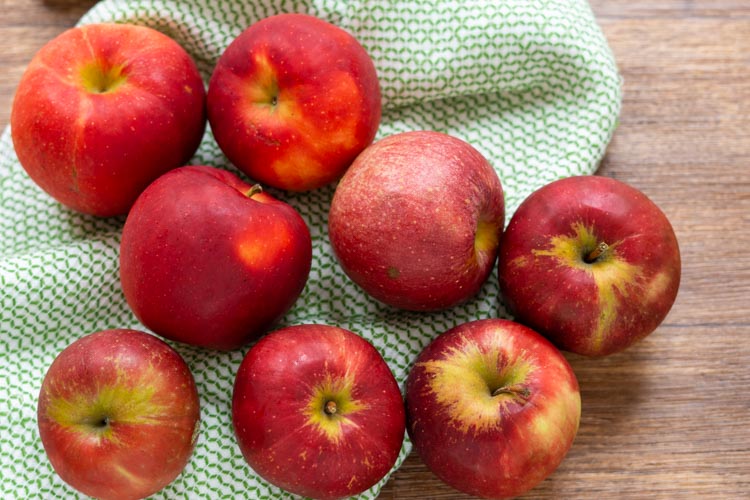Food Chemistry Project – 4 – Role of the Big 3
It’s time to get to work on your project again! We’ve already investigated quite a bit of the chemistry of your chosen food product. In this exercise, we’re going to dig just a little deeper yet again!
To start, pull up your outcomes from the previous project step, no. 3. In that exercise, you identified which of the big 3 molecules are present in your chosen food. Use what you learned in the last few sessions to start analyzing the role of those molecules in your product. Do this for at least one of the ingredients that you found in the previous exercise, even better, do it for all that you found!
The Apple
As an example, we’ll look at our apple again! In our search we found that apples mostly contain water and sugar (= carbohydrates). Sugar gives the apple sweetness. Some of the other carbohydrates give the apple structure.
Also, there are a few proteins in the apple. Some of these proteins are enzymes which make an apple turn brown when exposed to the air (e.g. after cutting or peeling).
Share your results or ask a question!
What do carbohydrates, fats, and proteins do in your food? Let us and the other in this course know :-).


The lemon is 89% moisture – H2O, so as a hydrophillic liquid, it can be easily incorporated into other ingredients in preparing many dishes, both hot and cold: drinks (lemon tea, lemonade, fruit punch), desserts (lemon delicious, lemon jelly, lemon ice cream), preserves (lemon butter, marmalade), cakes (lemon tea cake, lemon tarts), dressings and sauces (lemon vinaigrette, lemon chicken sauce).
Its carbohydrate content comprises 1.8 total sugars, which provide some energy and sweetness. Its presence would contribute to lemon gelato not freezong rock-hard (freezing point depression). It would add to the preservative value in marmalade.
It is listed as having just 0.6 gm protein in 100 gm, a negligable amount, and I cannot identify what observable effect this would have. A cut lemon does not brown on exposure to air, it merely dries out on the surface.
The lemon does not appear to have any fat (0% total fatty acids).
Hi Kath,
Great analysis. Whereas the little bit of sugar in lemons does contribute to some extension of shelf life, it mostly extends shelf life by making a product more acidic. Most microorganisms can’t grow any more when it’s too acidic. That same acidity also impacts potential browning reactions which are also stopped/slowed down when the pH-value is too low.